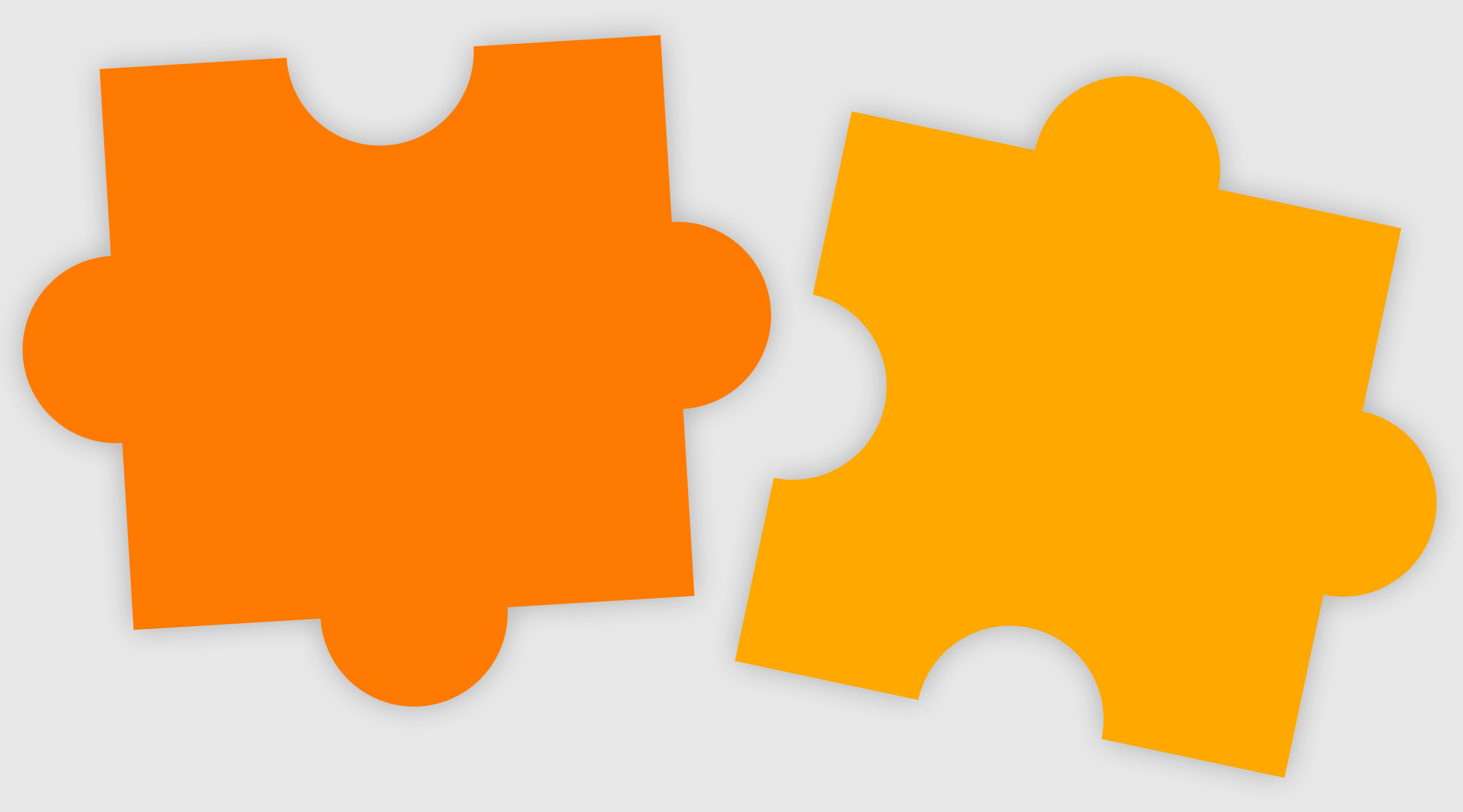“You always meet twice in life”: In with a nuanced approach to networking
Say goodbye to awkward introductions and hello to meaningful connections. Discover a fresh, stress-free approach to networking that aligns with your personal energy levels and goals.

You’re at an event and just awkwardly introduced yourself to someone: now you wish the ground would open and swallow you up. Sound familiar? Trust me—we’ve all been there. Too frequently, networking comes with fear of rejection, judgement, masking or feeling inauthentic, and the reasons can be manifold. No one should have to feel stuck in a room with strangers who frantically try to exchange contact details and share meaningless pieces of information. That’s why it’s time to rewrite the narrative to make networking more enjoyable and stress-free.
Words: Katja Alissa Mueller is a design leader and creative manager who elevates digital brands and products through design, vision and strategy. She’s helmed creative teams at informed, Courier Media and AllBright and worked with renowned brands like Mailchimp, Samsung, and Nike.

The core of networking
Let’s start with the fundamentals: What is networking? It’s about creating a connection, and that’s it. Next time you feel on edge, just remember this, and know that you have different ways to create these connections. Ideally, networking fosters a sense of community and collaboration. It’s about who you know, but also who knows you. However, it should never be a one-sided relationship in which one party solely seeks personal benefits and favours. From a psychological point of view, networking requires a high level of empathy and the ability to read nonverbal cues. It allows you to build trust, identify interests and be fully present to engage with your opposite.
Regrettably, much networking advice is often pigeonholed for either introverts or extroverts. Instead, I propose a more inclusive, nuanced approach that respects and caters to individuals’ unique self-awareness and energy levels while avoiding the perpetuation of stereotypes. This will help remove the complex and overwhelming aspects of networking and restore its ease, simplicity, and fun. Hopefully, in no time at all you’ll gain new opportunities, increase your confidence, make connections, and boost your profile—all in a stress-free manner that suits your personality.
A simple framework for authentic networking
There’s a networking framework out there that fully or partially might work best for you. Go through the following strategies, build your toolbox, improve your self-awareness, and monitor your energy levels. Some weeks you might be on fire, attend several events and connect with hundreds of people; another week you might connect with one or not see anyone at all. Honour yourself and tap into what suits you most. Networking is a long-term game; you want to feel energised, so pick a strategy that works for you.
Set an overarching goal. Why do you want to network in the first place? For example, you might want to meet more creatives in a city you recently moved to, find a new role, change industries, or gain insight into a specific company. A clear, overarching goal can help you stay motivated over time.
Your energy levels. Create a two-column list. On the left side, brainstorm network situations that deplete your energy. In the second column, list the networking situations that energise you. For example, do you gain energy from large or small gatherings? From deep one-on-one interactions or group discussions? In-person or digital meet-ups? Do you prefer morning, lunchtime or late afternoon networking events? Include as many as you can think of. If you have time, order them by intensity, with the most draining/most energy-giving on top. Once you have your list, I suggest you start with networking events that energise you the most. These are the ones that will make you feel comfortable and make networking easier each time. The more energy sessions you have, the more prepared you’ll be in situations that are part of your energy vampire list.
Improve your self-awareness skills. You’re human; your energy levels and interest in networking change. Check in with yourself daily. What are your energy levels like: when are you tired, energetic, highly focused or distracted? How do your levels fluctuate? Are there days or times when you feel more receptive or outgoing? You can log your entries with a simple journal on paper or use a digital tracker that can help you log your entries and analyse patterns.
Before each specific networking opportunity, set a small goal. For example, connect with two people, add one person to LinkedIn, take a picture of the panellist’s overview, and message them a day later on socials. Set small, manageable tasks to take the pressure off and add more joy to the process.
10 ways to network effectively—your way
Remember, there’s no one-size-fits-all solution to better networking. The framework above can help you discover your energy patterns and set goals, while the list below will help you determine some tactics. Your journey is unique, and your approach to networking should reflect that.
- Talk with your friends and family. You might not consider this networking per se, but it’s a non-stress environment you can define. Never underestimate who your friends and family might know and are connected to. Alternatively, ask a good friend to take you to one of their networking events. You’ll have a cheerleader by your side and you can hype each other up during introductions.
- Go to IRL events. The range of possibilities is vast. There are conferences, design festivals, trade shows, meet-ups, hackathons, gallery openings, portfolio reviews, workshops, panels and speed networking events, to name a few. A great idea is to stake out the environment and attendance number beforehand so you can plan for the levels of interaction. And if you feel extra energetic, consider becoming a speaker or organiser to boost your network. Tip: LinkedIn has a QR code in your profile, making scanning and networking easier.
- Visit online events like webinars. I treat these the same as IRL events, with the added benefit of being able to go off-camera if your energy level drains quicker than expected. The advantage is the vast global network you can tap into. Extra tip: take screenshots of who’s attending with you or export the entire chat when people add their social links. Reach out afterwards and start casual conversations in a way you feel comfortable with. Don’t just network up; network down and across to have different voices in your community.
- Join communities, online or offline. Consider professional organisations, WhatsApp groups, book clubs, alum networks, online forums, Slack groups, co-working spaces… You’ll often get access to exclusive events, resources and network opportunities. Don’t lurk and observe: get involved, introduce yourself, and interact with others. To take the pressure off, you could start with simple emoji responses.
- Leverage social channels. Reach out to people, tag them in posts, mention others when you listen to their podcasts or read their articles, share thanks, insights, or inspiration, and connect with people at companies you love. Join groups, participate in discussions and share your work. When you connect with someone, say hi, give them a quick intro, and explain why you connected with them. If people connect with you and don’t message, ask what prompted them to reach out. It’s a quick and simple technique to build rapport early on. When you start with an ice-breaker intro, it’ll be much easier to continue a conversation in the future.
- Create content and share your voice. Consider articles, videos, how-tos, podcasts, or project collaborations. Share your work on open-source platforms, engage in creative challenges, and interact with the people and communities engaging with your content. Create material for your platforms or contribute content to others in your name. By increasing your visibility through content, you’ll increase the effects of networking.
- Attend one-on-one meetings. whether it’s one-off, long-term, wanting to gain insights from someone at a company, or talking to someone whose profile you like. Just ask. Don’t overthink it. Write that message asking for their time, be specific in your request, and consider what you might offer in return. Don’t worry if they say no. Some will, and some will ghost you. However, some will say yes, and you’ll most likely have a great chat without the overwhelming presence that large crowds can create.
- Find a mentor / be a mentee. Seek out others for feedback and conversations. If you ask someone to be your mentor and they decline, ask them if they can recommend someone else. Unexpected doors will open. Be curious and willing to learn new things.
- Volunteer. If you have time and capacity, you can volunteer your skills, help at industry events (see point 2 for ideas), or get involved in community projects. You’ll expand your network, support a good cause and make unexpected connections.
- Enjoy serendipity, the one path that’s massively underestimated. Let conversations happen, whether it’s with the person in the grocery shop, the bus stop, or the cafe. There’s a saying that you always meet twice in life (though I believe in meeting three times, but that’s another discussion). Who knows who may cross your path again? Who will you be working with in the future? Being kind and curious can go a long way.
Over to you—it’s time to network
Whether you’re a seasoned networker or just getting started, tap into your energies, define your framework and personal network strategy, and set small goals. Be proactive, focus on connecting, get out there, be visible, and have fun. Don’t worry about saying something stupid; people are too preoccupied with themselves and will most likely worry about the same thing.
Let me know how you get on. I’d love to hear from you about your networking endeavours. You can find me on LinkedIn or Instagram.